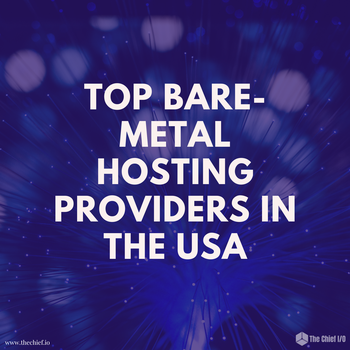Adding IaC security scans to your CI pipeline

The adoption of infrastructure as code (IaC) has skyrocketed in recent years as engineers seek ways to deploy cloud infrastructure faster and more efficiently. IaC refers to the technologies and processes that manage and provision infrastructure using machine-readable languages (code) as opposed to inefficient manual operations.
Languages and frameworks, like Terraform and Serverless, provide a unified language to codify infrastructure and streamline cloud orchestration across different environments and providers. Alternatively, cloud providers’ native IaC frameworks, such as AWS CloudFormation and Azure Resource Manager (ARM), transform manual, one-off processes into consistent, scalable, and repeatable provisioning.
Shifting cloud security left with IaC
IaC shifts infrastructure deployment left, providing new opportunities to automate, scale, and secure cloud environments.
Historically, teams have had to approach cloud security after the fact. They did this through resource monitoring for policy violations during run-time. Even with automation in place, this approach can end up being time-consuming and arduous for engineers that need to address identified issues reactively. By extrapolating cloud infrastructure into code and embedding it into the development lifecycle, teams can now address cloud security preventatively.
With IaC in place, you can enforce security best practices alongside your container scanning, dependency scanning, SAST, DAST, and more. However, for IaC security to be truly effective, it must be embedded into automated CI pipelines.
Getting started with security enforcement
How do you find policy violations and misconfigurations in the infrastructure used to build AWS, Google Cloud, Azure, and Kubernetes resources? By adding IoT security scans to your CI pipeline. Bridgecrew works by continuously scanning infrastructure to identify known security vulnerabilities and providing the code to fix them. For example, here are a few commonly overlooked policies:
- Ensuring all data stored in S3 bucket is securely encrypted at rest
- Ensuring no security groups allow ingress from 0.0.0.0:0 to port 22
- Ensuring all data stored in the Launch configuration EBS volume is securely encrypted
- To start identifying those issues, and scan your IaC locally, install Bridgecrew for the appropriate build environment:
## Standard installation
pip install bridgecrew
## Installation on Linux / Mac distros where `python` references python2
## (this is usually the case - run `python --version` to verify)
pip3 install bridgecrew
## Installation on Alpine
pip3 install --upgrade pip && pip3 install --upgrade setuptools\npip3 install bridgecrew
## Installation using homebrew (MacOS only)
brew tap bridgecrewio/bridgecrew https://github.com/bridgecrewio/bridgecrew\nbrew update\nbrew install bridgecrew
## Installation on Windows (ensure you add the cmd file to your path)
pip install bridgecrew\n
echo %PATH%\n
cd C:\\Users\\<my_username>\\AppData\\Local\\Microsoft\\WindowsApps\n
curl -o bridgecrew.cmd https://raw.githubusercontent.com/bridgecrewio/bridgecrew/master/bin/bridgecrew.cmdNext, sign up for a free Bridgecrew account, retrieve your unique API token, and scan a local directory or file:
##directory
- bridgecrew -d <directory> --bc-api-key <key> --repo-id <repo_id> --branch <branch>
##file
- bridgecrew -f <file_1> <file_2> ... <file_n> --bc-api-key <key> --repo-id <repo_id> --branch <branch>Bridgecrew will then print the following results to your command line, showing failing and passing issues:
_ _ _
| |__ _ __(_) __| | __ _ ___ ___ _ __ _____ __
| '_ \| '__| |/ _` |/ _` |/ _ \/ __| '__/ _ \ \ /\ / /
| |_) | | | | (_| | (_| | __/ (__| | | __/\ V V /
|_.__/|_| |_|\__,_|\__, |\___|\___|_| \___| \_/\_/
|.___/
by bridgecrew.io | version: 1.0.455
terraform scan results:
Passed checks: 2, Failed checks: 1, Skipped checks: 0
Check: "Ensure all data stored in the S3 bucket is securely encrypted at rest"
PASSED for resource: aws_s3_bucket.foo-bucket
File: /example.tf:1-25
Check: "Ensure the S3 bucket has access logging enabled"
PASSED for resource: aws_s3_bucket.foo-bucket
File: /example.tf:1-25
Check: "S3 Bucket has an ACL defined which allows public access."
FAILED for resource: aws_s3_bucket.foo-bucket
File: /example.tf:1-25
1 | resource "aws_s3_bucket" "foo-bucket" {
2 | region = var.region
3 | bucket = local.bucket_name
4 | force_destroy = true
5 |
6 | tags = {
7 | Name = "foo-${data.aws_caller_identity.current.account_id}"
8 | }
9 | versioning {
10 | enabled = true
11 | }
12 | logging {
13 | target_bucket = "${aws_s3_bucket.log_bucket.id}"
14 | target_prefix = "log/"
15 | }
16 | server_side_encryption_configuration {
17 | rule {
18 | apply_server_side_encryption_by_default {
19 | kms_master_key_id = "${aws_kms_key.mykey.arn}"
20 | sse_algorithm = "aws:kms"
21 | }
22 | }
23 | }
24 | acl = "public-read"
25 | }In the output above, two checks passed, and one check for “S3 Bucket has an ACL defined which allows public access” failed. This was done manually and locally. Automating IaC security with scanning is the only way to get complete coverage across security industry best practices and compliance benchmarks.
Using Bridgecrew for automated IaC security
For IaC security to be efficient and actionable, it needs to provide consistent feedback. The best way to get that consistency is by embedding IaC security into your automated CI pipelines.
Integrating Bridgecrew with CircleCI is done with the Bridgecrew orb. Configure a new CircleCI environment variable, BC_API_KEY, using the API token we found earlier. Next, configure your CircleCI workflow to trigger a Bridgecrew scan on every one of your builds. Your .circleci/config.yml will look similar to what you see below:
version: 2.1
orbs:
bridgecrew: bridgecrew/bridgecrew@1.0.3
jobs:
build:
executor: bridgecrew/default
steps:
- checkout
- bridgecrew/scan:
directory: ‘.’
api-key-variable: BC_API_KEYOnce you’ve added the Bridgecrew orb to your configuration file, the designated IaC directory will be scanned against hundreds of security compliance policies. Optionally, you can configure your CircleCI builds to fail should any policy violations be detected.
To conduct further investigation on incidents by severity, category, or compliance benchmarks, you can head to the Bridgecrew platform. Once there, you are able to drill into issues to understand their impact and affected resources, and fix the code appropriately:
With a pull request integration in place, you can instantly push remediations to your VCS, merge, and build again. This continuous workflow is the best way to ensure misconfigurations don’t get deployed into provisioned cloud resources. 🙌
Conclusion
IaC is an incredibly powerful tool to help cloud-native teams take their infrastructure to the next level with benefits related to speed, scalability, cost-savings, and security. By automating your IaC security, you can leverage the inherent immutability of IaC to harden your cloud security posture and save time doing it.
This post originally appeared in theCircleCI Blog.
Get similar stories in your inbox weekly, for free
Share this story:

Bridgecrew
Bridgecrew is the cloud security platform for developers. By leveraging automation and delivering security-as-code, Bridgecrew empowers teams to find, fix, and prevent misconfigurations in deployed cloud resources and in infrastructure as code.
Latest stories
HIPAA and PCI DSS Hosting for SMBs: How to Choose the Right Provider
HIPAA protects patient data; PCI DSS protects payment data. Many small and mid-sized businesses now …
The Rise of GPUOps: Where Infrastructure Meets Thermodynamics
GPUs used to be a line item. Now they're the heartbeat of modern infrastructure.
Top Bare-Metal Hosting Providers in the USA
In a cloud-first world, certain workloads still require full control over hardware. High-performance computing, latency-sensitive …
Top 8 Cloud GPU Providers for AI and Machine Learning
As AI and machine learning workloads grow in complexity and scale, the need for powerful, …
How ManageEngine Applications Manager Can Help Overcome Challenges In Kubernetes Monitoring
We tested ManageEngine Applications Manager to monitor different Kubernetes clusters. This post shares our review …
AIOps with Site24x7: Maximizing Efficiency at an Affordable Cost
In this post we'll dive deep into integrating AIOps in your business suing Site24x7 to …
A Review of Zoho ManageEngine
Zoho Corp., formerly known as AdventNet Inc., has established itself as a major player in …
Should I learn Java in 2023? A Practical Guide
Java is one of the most widely used programming languages in the world. It has …
The fastest way to ramp up on DevOps
You probably have been thinking of moving to DevOps or learning DevOps as a beginner. …
Why You Need a Blockchain Node Provider
In this article, we briefly cover the concept of blockchain nodes provider and explain why …
Top 5 Virtual desktop Provides in 2022
Here are the top 5 virtual desktop providers who offer a range of benefits such …












